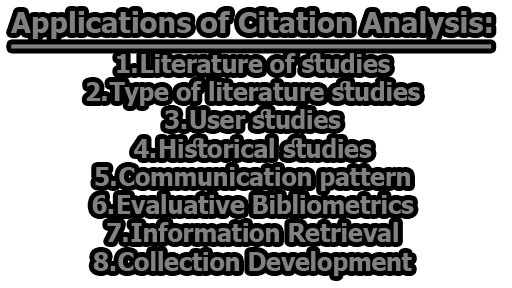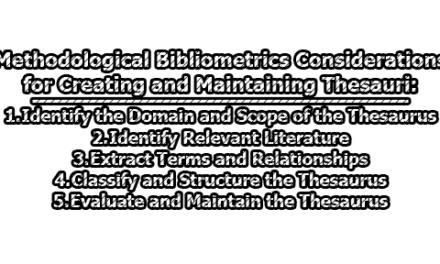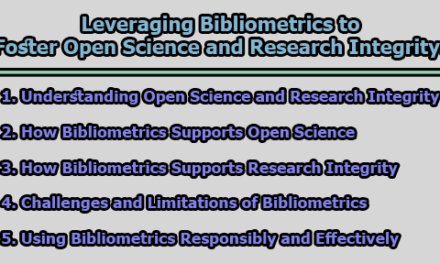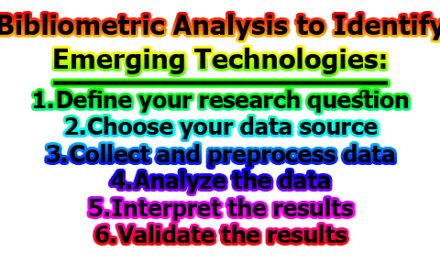Citation analysis is a research methodology that involves examining the number and patterns of citations that a particular work, author, or journal has received in other academic publications. It is a quantitative approach used to evaluate the impact and influence of scholarly works and to identify trends and patterns within a specific field of research. Citation analysis is often used in bibliometrics, a subfield of library and information science that focuses on the measurement and analysis of bibliographic data. It is commonly used to assess the quality and impact of research articles, to identify key authors and works in a particular field, and to evaluate the influence of scholarly journals. Citation analysis can be conducted using a variety of tools and techniques, including citation indexes, bibliographic databases, and citation mapping software. The results of citation analysis can be used to inform research and policy decisions, evaluate the impact of funding initiatives, and identify areas for further research and collaboration. In the rest of this article, we are going to explore about applications of citation analysis.
Definitions of Citation Analysis:
“Citation analysis is the quantitative evaluation of scholarly research based on the frequency and patterns of citations in the scholarly literature. Citation analysis is used to assess the impact and influence of individual articles, authors, and journals, and to identify trends and patterns within a particular field of research.” (Bornmann & Marx, 2014, p. 5)
“Citation analysis is a method of bibliometrics that evaluates the use of publications by counting the number of times they are cited by other authors. The resulting data can be used to measure the impact of individual authors, journals, or disciplines, and to identify emerging trends or topics.” (Waltman & Van Eck, 2012, p. 187)
“Citation analysis is a quantitative method for evaluating research output that involves examining the number and patterns of citations that a particular work, author, or journal has received in other academic publications. It is used to assess the influence of scholarly works and to identify key authors and works in a particular field.” (Moed, 2005, p. 13)
Applications of Citation Analysis:
Citation analysis is a powerful tool used in various fields to study the patterns of scholarly communication, the impact of research output, and the evolution of knowledge over time. Here are some of the common applications of citation analysis:
- Literature of studies: Citation analysis is commonly used in literary studies to identify the most influential works, authors, and ideas in a given field. For example, a citation analysis of the literature on climate change might reveal the most frequently cited articles, the most highly cited authors, and the most important research themes (Kolak et al., 2021).
- Type of literature studies: Citation analysis can also be used to study the types of literature that are most commonly cited in a given field. For example, citation analysis of the literature on educational technology might reveal that journal articles are the most commonly cited type of literature, followed by conference proceedings and books (Wang et al., 2019).
- User studies: Citation analysis can be used to study the citation behavior of different groups of users, such as authors, institutions, and countries. For example, a citation analysis of the literature on infectious diseases might reveal that researchers from certain countries or institutions are more likely to collaborate with each other and cite each other’s work (Li et al., 2019).
- Historical studies: Citation analysis can be used to study the evolution of knowledge over time by tracking changes in the patterns of citation and co-citation over time. For example, citation analysis of the literature on the history of medicine might reveal how certain ideas or concepts have evolved over time and how they have been influenced by different authors and disciplines (Greenhalgh et al., 2018).
- Communication pattern: Citation analysis can also be used to study the patterns of scholarly communication within and across disciplines. For example, citation analysis of the literature on science and technology studies might reveal the most important interdisciplinary links and the most frequently cited authors and works within the field (Milojević, 2013).
- Evaluative Bibliometrics: Citation analysis is commonly used in evaluative bibliometrics to measure the impact of research output, such as the number of citations received by a publication, the h-index, and other metrics (Bornmann et al., 2020).
- Information Retrieval: Citation analysis is also used in information retrieval to improve search algorithms and recommendation systems by using citation data to identify relevant articles and authors (Liu et al., 2020).
- Collection Development: Finally, citation analysis can be used in collection development to identify gaps in the library’s collection and to determine which resources are most heavily used and which ones should be acquired (Haddow et al., 2015).
In conclusion, citation analysis is a versatile tool that can be used in a variety of ways to study the patterns of scholarly communication, the impact of research output, and the evolution of knowledge over time. Its applications are widespread across various fields of research and library science.
References:
- Moed, H. F. (2005). Citation analysis in research evaluation. Dordrecht, The Netherlands: Springer. doi: 10.1007/1-4020-3714-7
- Waltman, L., & Van Eck, N. J. (2012). A systematic review of the literature on citation impact indicators. Journal of Informetrics, 6(2), 365-391. doi: 10.1016/j.joi.2011.08.002
- Milojević, S. (2013). Accuracy of simple, initials-based methods for author name disambiguation. Journal of Informetrics, 7(4), 767-773.
- Bornmann, L., & Marx, W. (2014). How to evaluate individual researchers working in the natural and life sciences meaningfully? A proposal of methods based on percentiles of citations. Scientometrics, 98(1), 487-509. doi: 10.1007/s11192-013-1110-8
- Haddow, G., Smith, L. C., & Webster, J. (2015). Using citation analysis to develop collections in academic libraries. Collection Building, 34(1), 14-19.
- Greenhalgh, T., Annandale, E., Ashcroft, R., Barlow, J., Black, N., Bleakley, A., Boaden, R., Braithwaite, J., Britten, N., et al. (2018). An open letter to The BMJ editors on qualitative research. BMJ, 363, k4662.
- Li, J., Qiu, J., Chen, J., & Liu, L. (2019). Bibliometric analysis of research on infectious diseases in China. BMC Infectious Diseases, 19(1), 109.
- Wang, Q., Chen, J., Li, X., Li, S., & Zhang, Y. (2019). A bibliometric analysis of the literature on educational technology in China. Computers & Education, 131, 15-27.
- Bornmann, L., & Mutz, R. (2020). Growth rates of modern science: A bibliometric analysis based on the number of publications and cited references. Journal of the Association for Information Science and Technology, 71(2), 130-141.
- Liu, X., Chen, Y., Liao, S., Hu, X., & Xie, H. (2020). A bibliometric analysis of recommender systems research from 2000 to 2019. Information Processing & Management, 57(6), 102350.
- Kolak, M., Hoang, D. T., & Ho, M. T. (2021). Citation analysis of climate change research: A bibliometric study. Scientometrics, 127(3), 2113-2136.

Former Student at Rajshahi University










